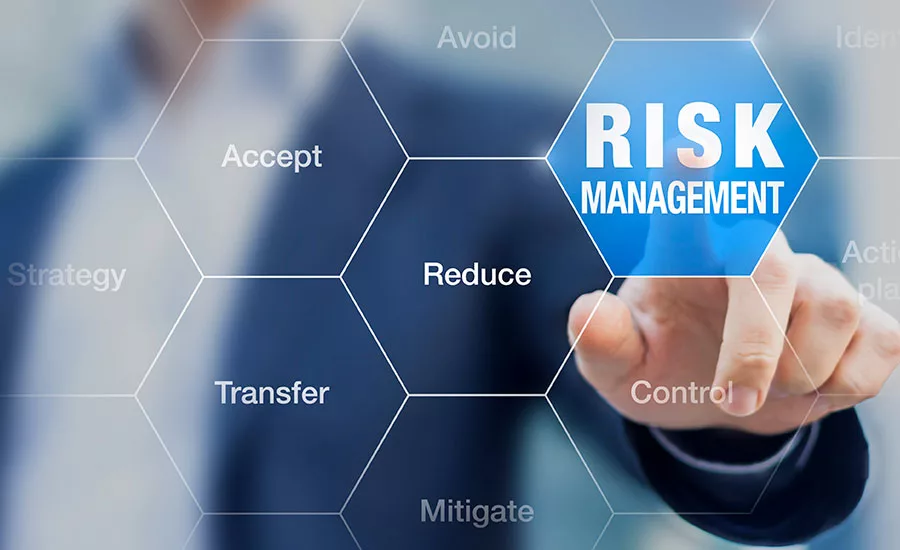5 Tips for Minimizing Third-Party Risk

Outsourcing has become a vital part of most business strategies. Not only is it a way to save money, but it’s a simple way to take advantage of expertise you might not currently have in house. But outsourcing can also leave companies vulnerable if the third-party doesn’t have proper cybersecurity procedures.
In fact, looking at all data breaches over the last two years, more than half of them were the result of a third-party data breach. Within the last year alone, the FBI, U.S. Customs & Border Protection, Capital One and Palo Alto Networks have had data compromised as the result of a third-party breach.
The problem is that many third-party vendors feel they are too small to be targeted by cyberattackers. However, as we all know - this is certainly not the case. The reality is that these third parties are trusted with huge amounts of sensitive customer data in order to effectively carry out their job. And if cyberattackers think that these are the weakest link in your security ecosystem, then they are going to be ground zero of bad actor efforts to gain valuable corporate and customer data.
Companies need to recognize that, unfortunately, risk is all around. However, there are things organizations can do to minimize that risk - especially when it comes to the vendors with whom they do business.
1. Thoroughly Vet Third Parties Before They Have Access to Your Data
Though organizations usually agree that vetting third parties is critical to doing business with them, 60 percent still don’t think they’re doing a good enough job vetting them. Improving the diligence and situational awareness around this area is the first step to enhancing your vetting process.
To thoroughly vet third parties, you must invest in the right tools and determine the most important certifications. Endless spreadsheets are time-consuming and ineffective, but the right vetting tools and credentials give you a better picture of the type of vendor you are willing to trust with your data. As the infamous saying goes, you get what you pay for. Think of choosing a vendor like buying a car; you have to look at the entire car to ensure it’s up to standard. Just kicking the tires and color won’t give you a full picture of what you’re investing in.
Determining credentials that are important to you also plays a role in this process. Criteria can be anything from “has the vendor experienced a data breach in the past” to “does it invest in next-gen security solutions?”
2. Ask for References
We ask for references for almost every choice we make - so why not when accessing the security commitment of our vendors? It’s not good enough to take a third-party’s word that they are top-notch - go a layer deeper and ask other organizations that have used their services what they truly think. It’s like any restaurant review: if the reviewer had a good or bad experience, they will be sure to let you know. When asking for references, get specific. If you want to talk to a former, long-term or new customer, ask!
3. Apply the Same Standards Internally to Third Parties
Once you’ve selected a vendor, they’ll work with you to determine a Service Level Agreement (SLA) that meets your necessary requirements and maps out the security controls that they must maintain.
Don’t throw caution to wind here and assume that the vendor’s standard protocols are good enough. Holding third parties to the same security standards that you apply internally is your best bet to ensure that data is protected.
4. Restrict Access, Don’t Overshare
In tandem with the idea of applying the same internal standards to third parties, organizations shouldn’t share data with anyone that doesn’t need access to perform their job function. For example, the engineering team doesn’t need access to HR documents on each employee, so we restrict access so that only HR can access that data. The same goes for third parties - if they don’t need the data to do the work in their remit, restrict access. This contains the blast radius in the event that one of your vendors does experience a data breach.
5. Routinely Audit for Third Parties’ Cybersecurity Procedures
After you’ve thoroughly vetted your third parties, you can’t just set it and forget it. It is also important to continually check-in on your third parties’ cybersecurity procedures because, to put it simply, things can change.
Usual contracts give organizations the ability to audit its third parties whenever they want, but I’d recommend every six months to a year. This keeps the vendors on their toes, without creating a strenuous relationship with your partners.
Trusting third parties with sensitive data can be risky, but with some due diligence and little skepticism, you’ll find partners that hold themselves accountable for keeping your data secured.
Looking for a reprint of this article?
From high-res PDFs to custom plaques, order your copy today!








